Things bakers know: Instant yeast is superior to active dry. Here’s why.
Speed, price, ease of use — and results.
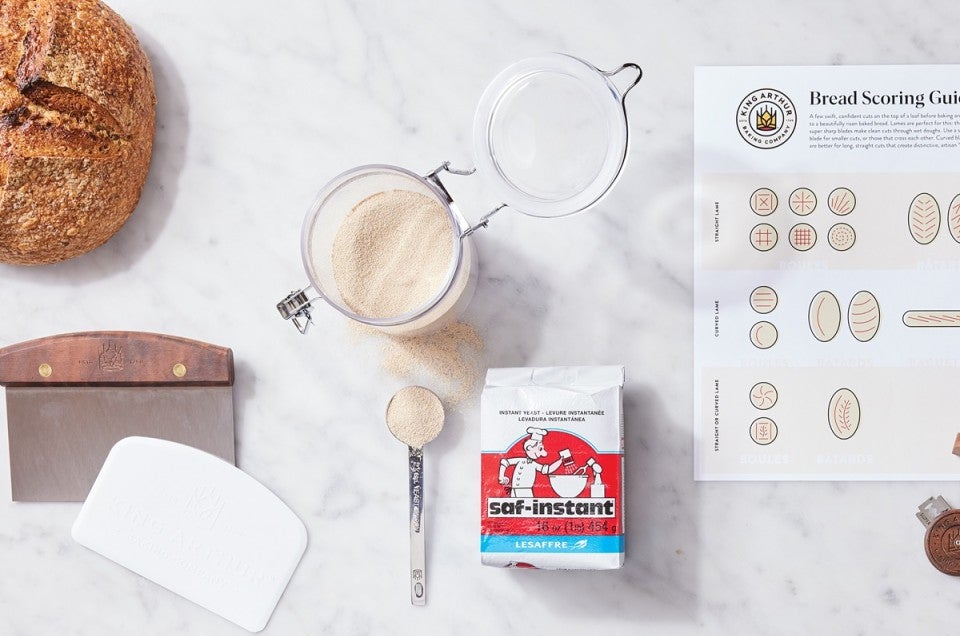

I haven’t used active dry yeast in my homemade bread, rolls, and pizza for nearly three decades. Not a single granule. And it’s not because I’m a sourdough purist.
So, what’s the deal? How do I get my dinner rolls to rise?
Instant yeast: the only type of yeast I’ve used in my kitchen since King Arthur introduced it to home bakers over 25 years ago. Specifically, I use SAF Red instant yeast (or SAF Gold for sweet breads). And in all that time (over 1,000 bakes later), I’ve never had a yeast-induced failure — not even the times when I used some 6-year-old SAF I discovered in the bottom of my chest freezer!
And it’s not just me who prefers instant yeast – it’s been a staple in both our King Arthur Test Kitchen and King Arthur Bakery for over 20 years.
Can you bake great bread with active dry, rapid, fresh compressed, or other kinds of yeast? Of course, and people did, for decades. But times change. Here’s why I always have instant yeast in my freezer — and why you should, too.
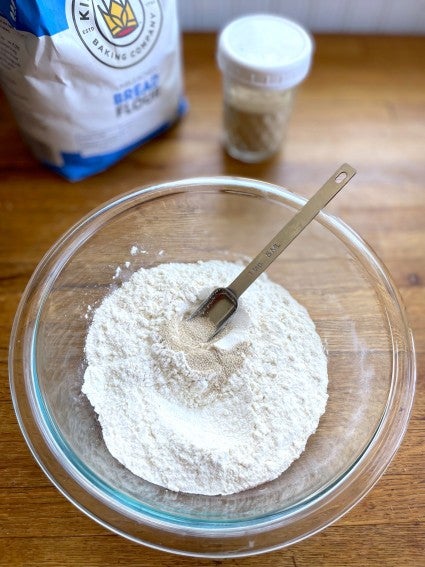
Mix instant yeast with your flour and other dough ingredients; there’s no need to dissolve it in warm water or another liquid first, as you might with active dry or other yeasts that need to be proofed (i.e., dissolved to ensure they’re alive). That’s one less step to take; 10 minutes proofing time saved.
Plus, instead of having to rip open the typical tiny pre-measured packet of active dry yeast — which might not even contain the amount you want to use — you simply have to spoon instant yeast from its 1-pound sack (or the container you’ve stashed it in).
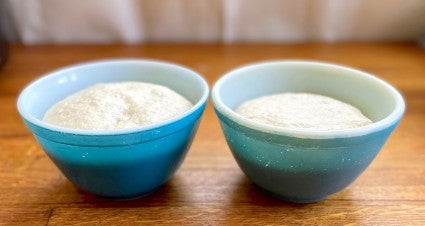
Not only does it skip the proofing/dissolving step, instant yeast simply ramps up more quickly than active dry. Dough made with instant yeast and shaped into a loaf will rise to its optimal height significantly more quickly than a shaped loaf made with active dry yeast.
In fact, instant yeast is equivalent to rapid-acting yeast in initial speed, starting to raise dough almost immediately. But instant yeast will keep working long beyond the quick arc of rapid yeast, allowing you to refrigerate your instant-yeast dough for days and still get a good, strong rise at the end.
A pound of instant yeast is ridiculously inexpensive: you’ll only use about 11 cents of instant yeast (the equivalent of a standard 1/4-ounce packet) in each loaf you bake. Compare that to the $1.66 per one-loaf packet Amazon’s currently getting for active dry yeast; or even the 90¢ per packet charged at a typical supermarket. (Want to increase your savings even more? See How to bake bread using less yeast.)
Substitute instant yeast 1:1 by weight or volume for any active dry yeast called for in your recipe. If your recipe calls for a packet of yeast (7g, a slightly heaped 2 teaspoons), use the same amount of instant. Simply add it to your bowl along with the flour and other dry ingredients; no need to dissolve it first. See? Quick and easy.
You don’t know how you’ll ever use up a pound of yeast? Stored in an airtight container in the back or bottom of the freezer, it can last for years. But honestly, you’ll love baking with instant yeast so much it won’t be around nearly that long!
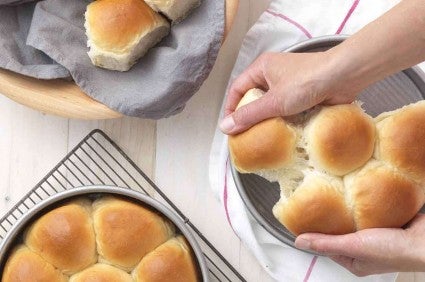
SAF instant yeast is used every day in the King Arthur Test Kitchen. It’s certainly my yeast of choice; and I hope from now on it’s yours, too. In case you’re curious, here are a few of my go-to (instant) yeast recipes:
Classic Sandwich Bread — This nostalgic pan loaf is close-grained, nicely sliceable, and perfect for sandwiches and toast.
Golden Pull-Apart Butter Buns — I’m absolutely required to make these soft white rolls for every family holiday dinner and gathering.
Grandma Pizza — Not super-thin, not ultra-thick, this crust is the perfect base for my favorite topping combo: sautéed portobello mushrooms, artichoke hearts, oven-roasted cherry tomatoes, and a mixture of mozzarella and provolone cheeses.
Soft Cinnamon Rolls – The tangzhong method (think Japanese milk bread) keeps these classic pull-apart-and-unravel rolls nice and soft for days.
Tuscan Coffeecake — Loaded with dried fruit and toasted walnuts, this rich, dense loaf features an inspired sugar-vanilla crackly glaze.
Want to know more? For a complete comparison of instant vs. active dry vs. rapid yeast, see Which yeast to use?
Cover photo and food styling by Kristin Teig.

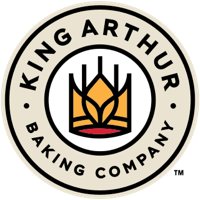

December 23, 2024 at 5:22am
My recipe calls for 2 packs compressed yeast. Is the ratio still 1:1? Heaping teaspoon
February 17, 2025 at 10:11am
In reply to My recipe calls for 2 packs… by Karen (not verified)
Hi Karen, if by "compressed yeast" you mean fresh or cake yeast, then the conversion is not 1:1 between this type of yeast and dry yeast. If you're talking about the conversion from active dry yeast to instant yeast, then, yes, you can substitute these two yeasts 1:1. Here is a conversion chart that you may find helpful if you're recipe calls for compressed (fresh) yeast. If you have further questions, please don't hesitate to contact our Baker's Hotline. We're here M-F from 9am-7pm EST, and Saturday and Sunday from 9am-5pm EST, and the number to call is 855-371-BAKE (2253). We're also available via CHAT.
December 6, 2024 at 8:32pm
Hi, I just bought SAF Red and SAF Gold yeast 1 lb each. What is the difference. I thought one was Instant and the other was Active dry. I was looking for Instant Rapid Rise and an Active for Refrigerator long cool rise. SAF website just says Gold is for sweet dough's.
Did I mess up? Thanks
Gary
January 8, 2025 at 12:22pm
In reply to Hi, I just bought SAF Red… by Gary (not verified)
Hi Gary! Gold yeast is meant to be used in doughs that have sugar weighing in at 10% or more of the total flour's weight. Generally things like Hawaiian buns and brioche doughs call for gold yeast. Otherwise for lower sugar than 10% in doughs, the red yeast will work just fine.
Rapid rise yeast is generally used in bread machines only and shouldn't be substituted for instant or active yeasts in recipes since it has enzymatic activity in it. Happy baking!
October 18, 2024 at 2:00pm
You stated use Instant Yeast 1:1 ratio on what the recipe calls for Active Dry Yeast.
If I'm using a bread machine, do I then continue to use the "Basic" setting or use a "Quick" setting (Hamilton Beach Bread machine).
October 19, 2024 at 10:51am
In reply to You stated use Instant Yeast… by Rita (not verified)
Hi Rita, you should be able to use either active dry yeast or instant yeast for the Basic setting, but for the Quick-Rise setting, I would go with instant yeast. Note that some bread machines have a "Quick" setting that is meant for quick breads that are leavened with baking powder or baking soda rather than yeast. In the manual I was looking at for a Hamiltion Beach Bread Machine, the setting for quick rising yeast bread is called, "1.5lb Express."
March 2, 2024 at 5:53pm
I have an old roll recipe that calls for “yeast”’ which I am assuming is “active yeast. This recipe is a long 3 stage/rise, cold water & overnight refrigerated recipe. If I am to use SAF red instant yeast, can I proceed with a 10 minute proofing and only 1 rise after I shape the rolls? This recipe also requires eggs & oil. I have been apprehensive about making the recipe because of the 8+ hours to do so, no matter how delicious they taste. Any advice would be greatly appreciated! Thank you!
March 9, 2024 at 10:23am
In reply to I have an old roll recipe… by Denise (not verified)
Hi Denise, if your recipe originally called for active dry yeast, I would recommend using the same amount of SAF Red Instant Yeast and following the same timeline as the recipe indicates. This type of yeast might speed up the rises slightly, but won't change the timeline as drastically as you suggest. The SAF yeast will tolerate this longer schedule and should perform well, and the extended rise will help build more flavor in your dough. On the other hand, if you think your original recipe called for fresh or cake yeast, then you may need to adjust the amount of yeast added. I would still follow the original timeline, but this chart can help determine how much instant yeast to substitute for fresh yeast.
February 24, 2024 at 3:52am
I’m substituting SAF instant yeast for active dry yeast in an English muffin recipe. If you add the instant yeast directly to the flour instead, what do I do with the water and sugar in the recipe that was supposed to proof and feed the active dry yeast? Do you just add it to the recipe as called for without yeast in it or do you omit it altogether? I think I know the answer but I need to make sure (it’s my first time baking anything with yeast). Thanks!
February 29, 2024 at 4:41pm
In reply to I’m substituting SAF instant… by Leah Monterroso (not verified)
You'll want to simply add it to the recipe without the yeast, Leah. If you leave it out altogether you'd end up with a pretty dry dough and a very dense baked good.
Pagination